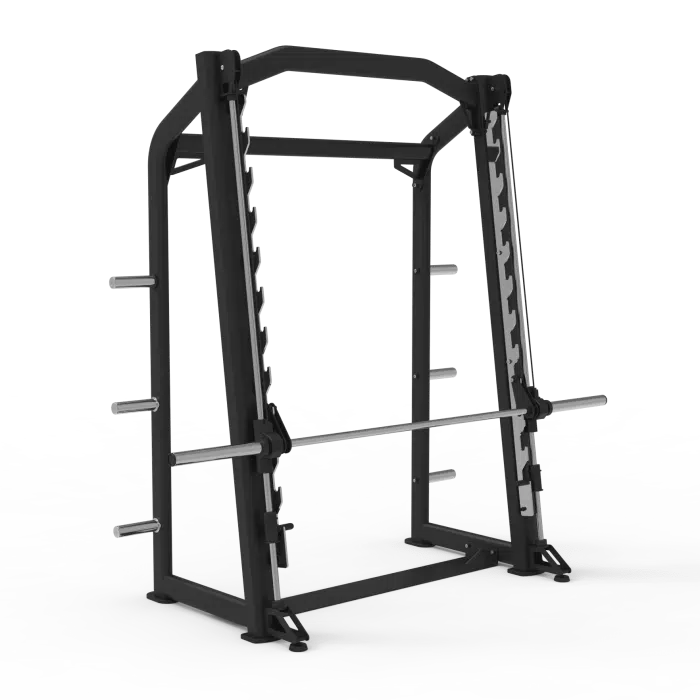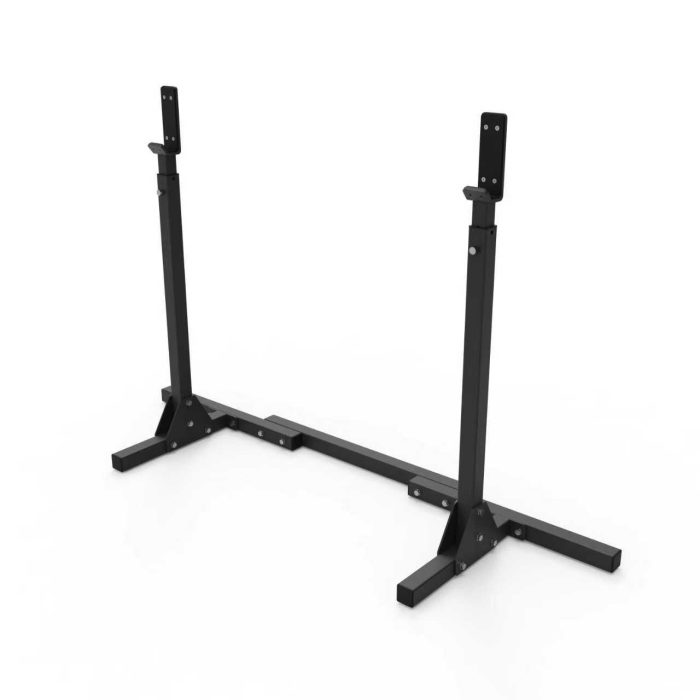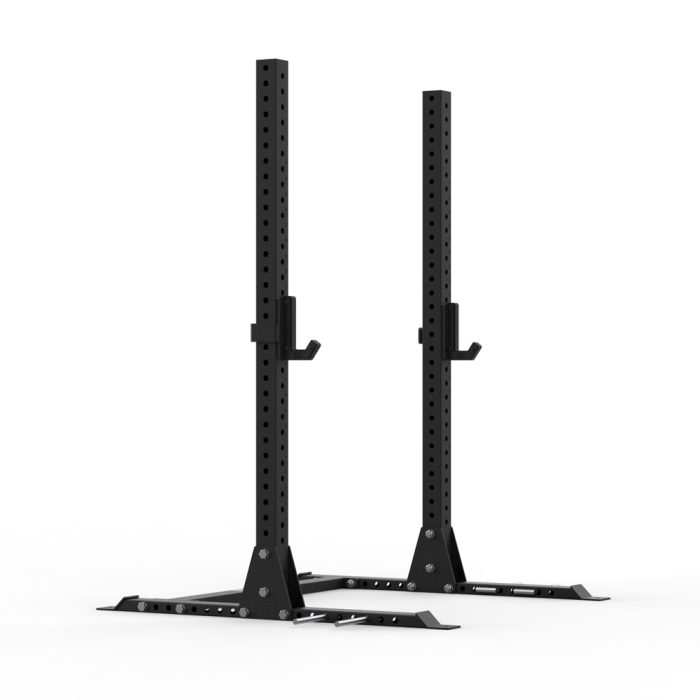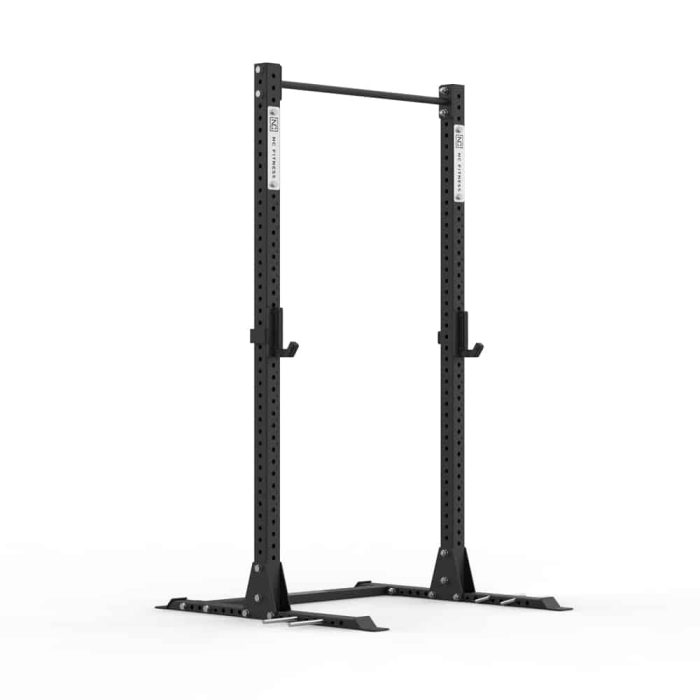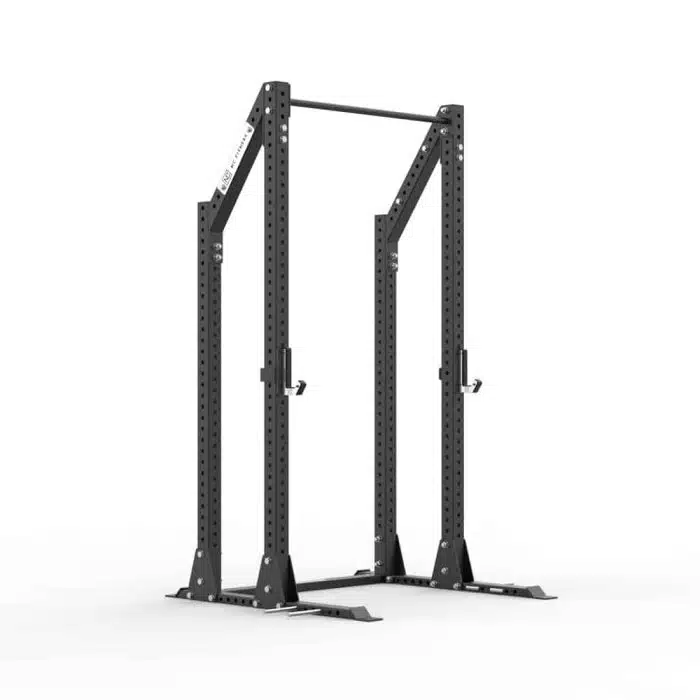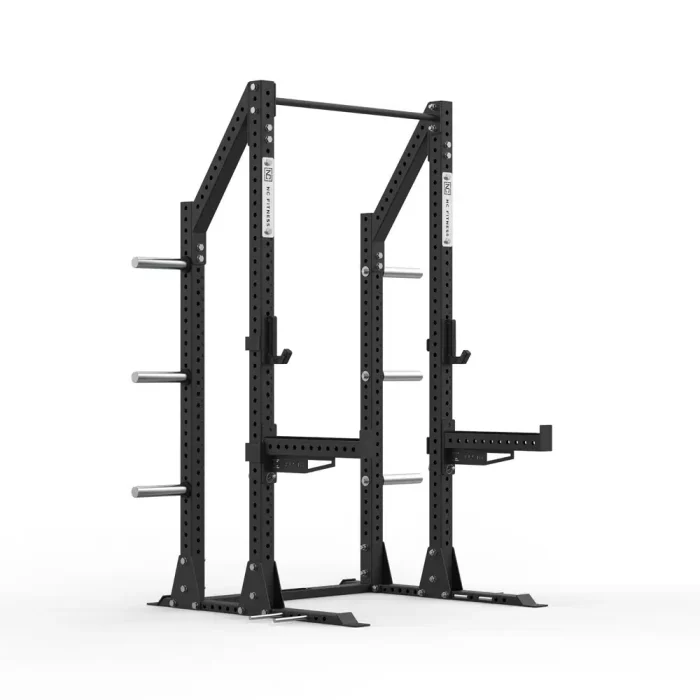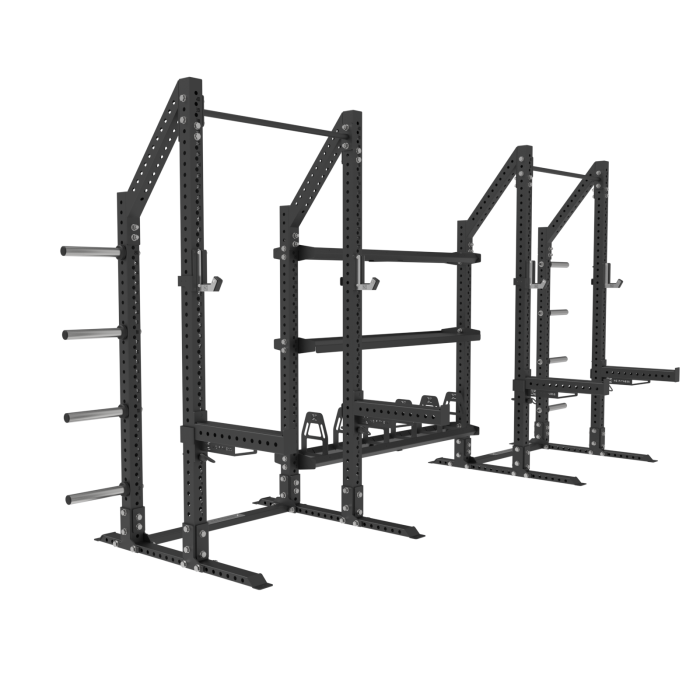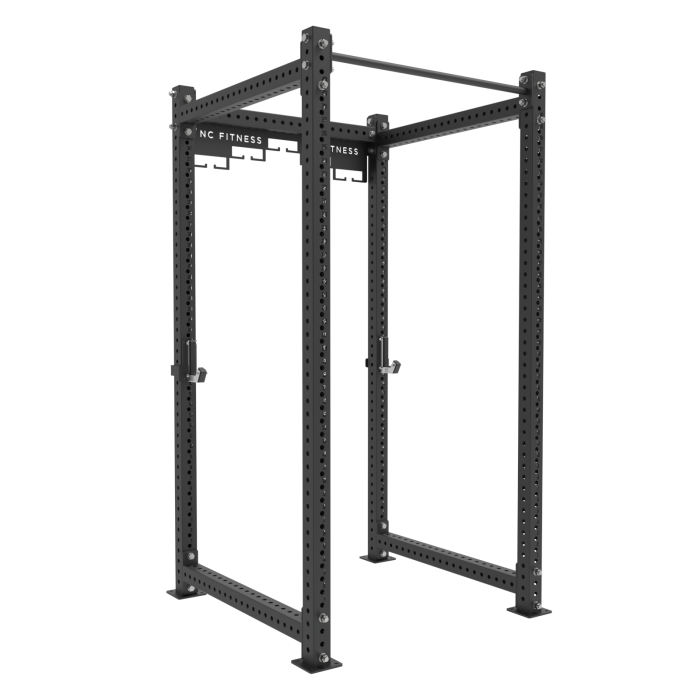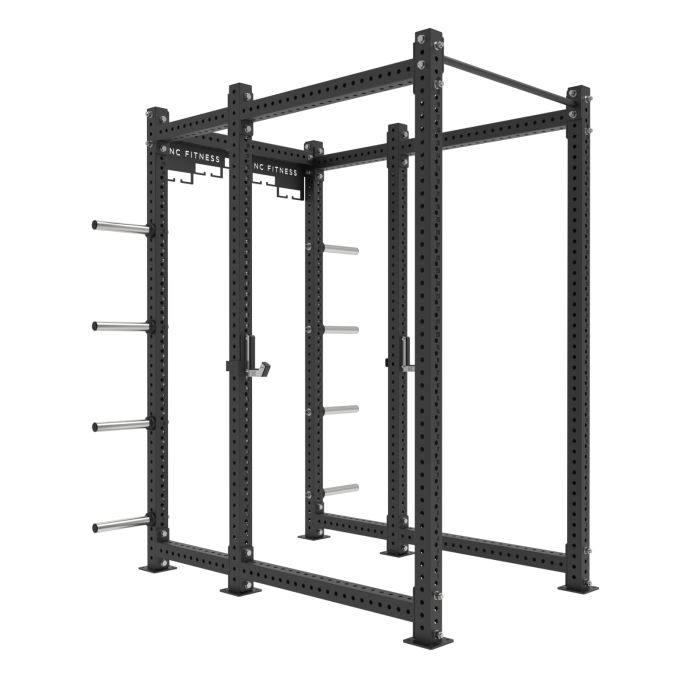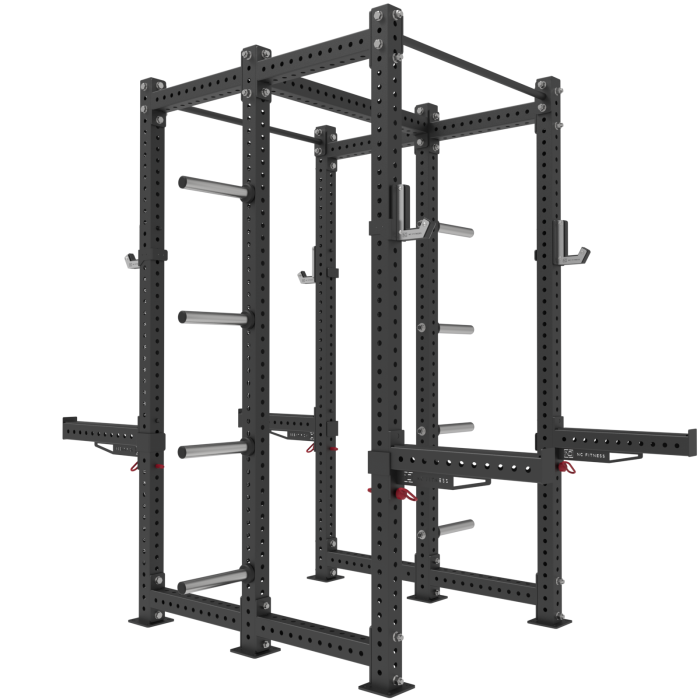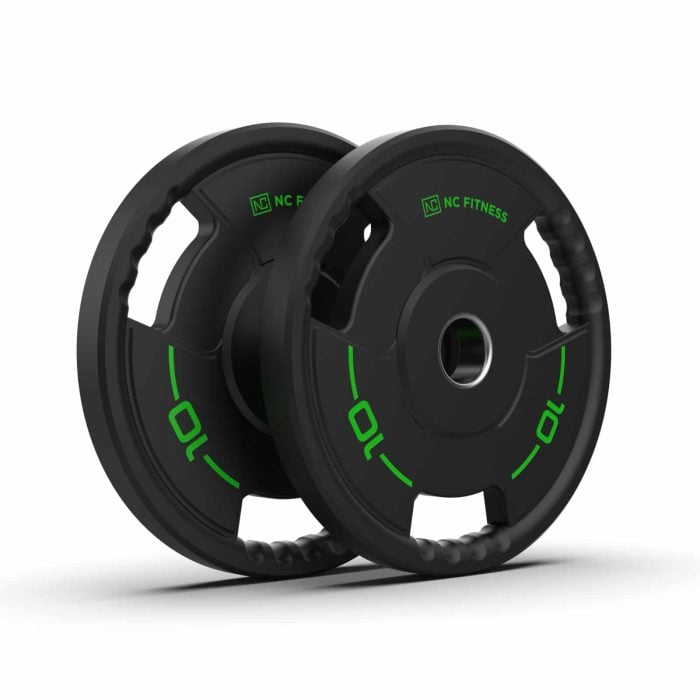A squat rack or power cage is the cornerstone of any serious strength training setup. This essential piece of gym equipment allows you to safely load a barbell and perform heavy compound lifts like squats and bench presses, due to their integrated safety bars. At NC Fitness, we offer a premium range of squat racks and power cages to suit every home gym space and training goal.
Why You Need a Squat Rack or Power Cage
Integrating a squat rack into your training routine is ideal for building serious strength and muscle safely.
-
Unmatched Safety: Safety bars catch the weight if you fail a rep, protecting you from injury. A critical feature for solo lifters.
-
Superior Versatility: Perform squats, bench presses, overhead presses, rack pulls, and more. Add attachments like dip bars, landmines, or pulley systems for a full-body workout.
-
Perfect Adjustability: Precisely set your J-hooks and safety bars to your height for optimal, comfortable lifting form on every exercise.
-
Increased Strength & Muscle: safely handle heavier weights on fundamental barbell movements, driving maximum muscle growth and strength gains.
Squat Rack vs. Power Cage: Which is Right For You?
Choosing the right equipment depends on your space, budget, and training style.
1. Squat Stands / Squat Racks
Ideal for lifters with limited space or a focus on core barbell movements. A squat rack typically features two vertical uprights to hold the barbell.
-
Best For: Basic squats, overhead presses, and bench presses.
-
Space-Saving: Minimal footprint, often more portable.
-
NC Fitness Tip: Our essential squat racks are perfect for garage gyms and apartment workouts where space is a premium.
2. Half Power Cages / Half Racks
A hybrid design that offers more stability than a squat stand and more space efficiency than a full power cage. Often includes plate storage and attachment points.
-
Best For: Lifters who want more stability and exercise options without a full cage.
-
Key Feature: The open-front design is excellent for Olympic lifts like cleans and jerks.
3. Full Power Racks / Power Cages
The ultimate training station for serious strength athletes. This four-post “cage” design offers maximum stability, safety, and exercise versatility.
-
Best For: Heavy lifting, adding numerous attachments, and commercial use.
-
Unbeatable Safety: The enclosed design completely contains the barbell. Can often be used by two people simultaneously.
-
NC Fitness Tip: Invest in a power cage if you plan to train heavy long-term and want a single, comprehensive station for your entire workout.
4. Fold-Away & Wall-Mounted Racks
The ultimate space-saving solution. These sturdy racks fold flat against the wall when not in use, making them perfect for garage and apartment gyms.
-
Best For: Maximising floor space without sacrificing functionality.
-
Key Feature: Incredibly sturdy when in use, yet virtually disappear when you’re done training.
Key Features to Consider When Buying
-
Space & Footprint: Measure your area carefully. Remember to account for the barbell length and space to move around the rack.
-
Weight Capacity: Ensure the rack’s max capacity exceeds your current and future strength goals.
-
Attachment Compatibility: Think about future upgrades. Does the rack have holes for accessories like lat pulldowns, dip bars, or landmines?
-
Build Quality & Safety: Look for robust steel construction, secure locking mechanisms, and reliable safety bars.
Shop Premium Squat Racks & Power Cages at NC Fitness Australia
Ready to build your dream home gym? NC Fitness is your trusted supplier for high-quality, durable squat racks and power cages in Australia. We help you find the perfect fit for your space and training needs.
Browse our collection today!
Showing all 10 results
